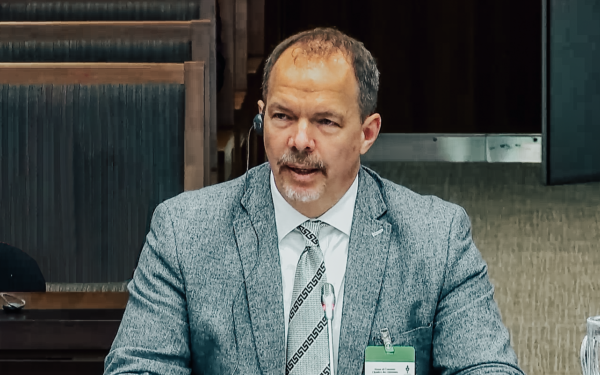At an event a new Internet Exchange Point (IXP) was launched in Montréal.
This week marks an important milestone in the ongoing development of the Internet in Canada. At an event attended by dozens of partner organizations and government representatives, a new Internet Exchange Point (IXP) was launched in Montréal.
CIRA’s director of IT, Jacques Latour, represented CIRA at that event, as CIRA worked with a group of partners to establish the Montréal Internet Exchange, also known as QIX. Réseau d’informations scientifiques du Québec (RISQ), Quebec’s non-profit scientific information network will operate QIX. Other partners included Fibrenoire, Cogeco Data Services, Metro Optic, RISQ, optic.ca, Groupe Teltech Inc., Cologix, and Google to create this IXP.
In June of last year, CIRA made public our work with interested community partners across Canada to facilitate the creation of more IXPs. QIX demonstrates that we are following through on that commitment and in the months to come, we will continue to work with partners in other cities in Canada, including in Winnipeg. As I’ve explained in the past, creating more IXPs is fundamentally about making Canada’s Internet infrastructure more robust, secure and resilient and reducing the cost of access for all Canadians. This video from European Internet Exchange Association provides the best explanation I’ve seen about how IXPs work. The benefits of IXPs are not inconsequential. It’s become old news that Canadians pay among the highest rates in the industrialized world for Internet speeds that are comparatively slow.
There were only two IXPs in Canada previously. This has resulted in an inferior Internet infrastructure compared to Canada’s international counterparts. The U.S., by comparison, has 85 IXPs, and Sweden, a country of nine million people and an advanced Internet economy, has 12 IXPs. Consider that the Internet, which today represents about three per cent of Canada’s GDP, is expected to account for as much as seven per cent by 2016. That equates to $75 billion, twice the size of the forestry industry, an industry upon which this country was built. It’s also larger than the tourism industry. It’s a dollar figure that represents high-value jobs in IT and other related industries. This is wealth that is created here in Canada and, to a great degree, remains here in Canada. But as I said in February at the kick-off event for our 2013 Canadian Internet Forum, it isn’t just about the money.
Byron Holland (MBA, ICD.D) is the president and CEO of the Canadian Internet Registration Authority (CIRA), the national not-for-profit best known for managing the .CA domain and developing new cybersecurity, DNS, and registry services.
Byron is an expert in internet governance and a seasoned entrepreneur. Under Byron’s leadership, CIRA has become one of the leading ccTLDs in the world, with over 3 million domains under management. Over the past decade, he has represented CIRA internationally and held numerous leadership positions within ICANN. He currently sits on the Board of Directors for TORIX, and is a member of the nominations committee for ARIN. He lives in Ottawa with his wife, two sons, and their Australian shepherd, Marley.
The views expressed in this blog are Byron’s opinions on internet-related issues, and are not necessarily those of the organization.




